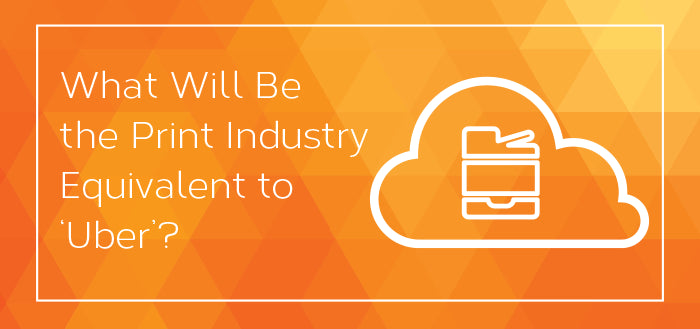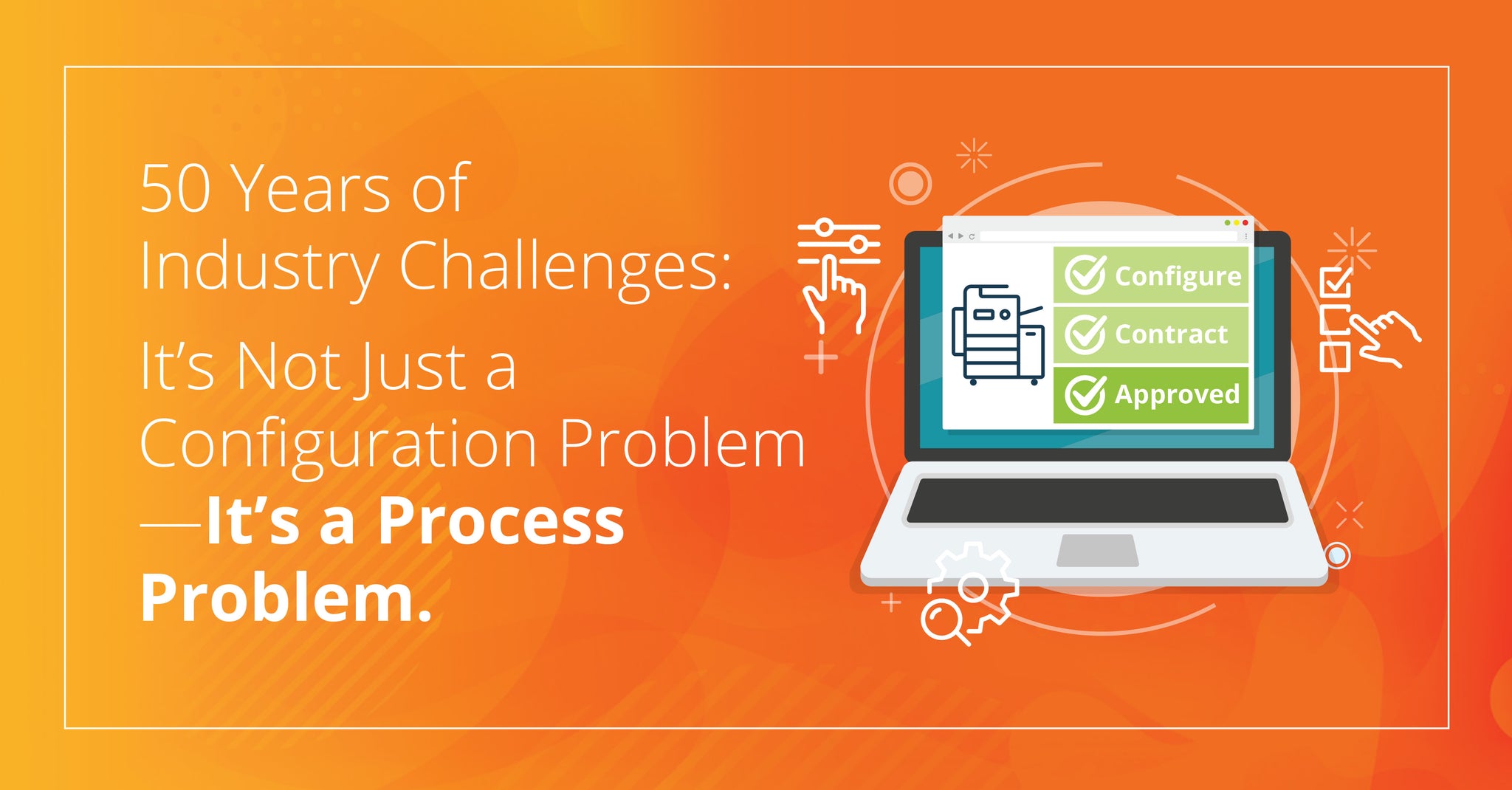
At a recent dealer meeting, I was asked to include in my presentation an answer to the question above. It really is a great conversation starter, and forces us all to think about how our industry can (and will) be fundamentally disrupted. We often think of change as incremental, but eventually all industries get knocked on their collective behinds. I’ve seen a post that explains that the biggest hotel company in the world owns no rooms (Air BnB) and the biggest taxi company owns no vehicles (Uber).
So how will print change?

Technology has a way of interrupting the balance of a mature industry. Often it takes a while before that technology can be repurposed into something truly disruptive. Let’s take your internal company network, for example. It connects your users together - usually there is a central server, with a few key applications on it, a few printers, maybe a router or a firewall to keep the bad guys out, and to enable you to go online. To the cloud. That’s where it all happens today. Most of your important applications are online. Banking, finance, CRM, social media, email. In order to print, you need a network. But what if the network, as we know it, went away? What if there was no network to print on? It’s happening. More and more companies are disposing of their network and going LAN-less. This could be a big problem for your business. Or maybe it could be an even bigger opportunity. What are the implications of a world without LANs?
I often hear that one reason this is not possible is because of security concerns. This MAY be true of some industries but apart from government regulation, I’m willing to bet that the data you house online at places like Amazon, Salesforce and QuickBooks is far safer than what you host locally - not to mention far more available. I’m willing to bet your server goes offline a lot more often, and for longer periods of time, than cloud based applications. It’s also likely kept up-to- date with far fewer headaches than your server based applications. One day, most companies will awake to find their server really doesn’t perform an important function, apart from a few things like office printing. Wait. What?
So this brings us to the ‘Uber-ing’ of office printing. What if you didn’t access the printer on your network? What if you accessed print via the cloud? Even if it was right in front of you. We interact every day like this, with applications like email and Skype. We send files and communications up to the cloud and back to employees that are 5 feet away from us. With cloud printing, a whole lot more starts to become possible for dealers and print users.
- All devices can easily access print. Mobile phone, laptop, guest? No matter. Send a job to the cloud. Enter in a code to the printer, et voila , your document can be printed
- Document storage, management, and user tracking all online. Why the heck do you need a local system on your network to do this? Think about Google. Google Docs, Gmail, Google Drive. It performs this function already.

The most important implication of all this? Under this scenario, doesn’t print start to look more like a service? Why does a company need to own or lease hardware? Can’t they just pay-per- use? This approach can look a lot like a vending machine model. The company does not need to own the asset; users merely pay as they consume print. Users can have accounts set up individuals, charged on demand with their credit card, or set up as a corporate account. It would seriously disrupt the remote management software business, the print server business and more profoundly, the print hardware business.
The lesson from Uber is that the taxi drivers did not like the model, and ignored it, but their customers embraced it. Imagine what this could look like from a sales perspective. A customer can buy/lease hardware and then pay for pages, or, they can just pay for pages. I’d hate to be the sales person explaining why the customer needs to buy hardware when their competitor explains that ownership is not required. This function could also be managed via your gateway to the cloud: your website, which can drive valuable traffic, and hopefully revenue, to your company.
Game changer? Well, I think so.


